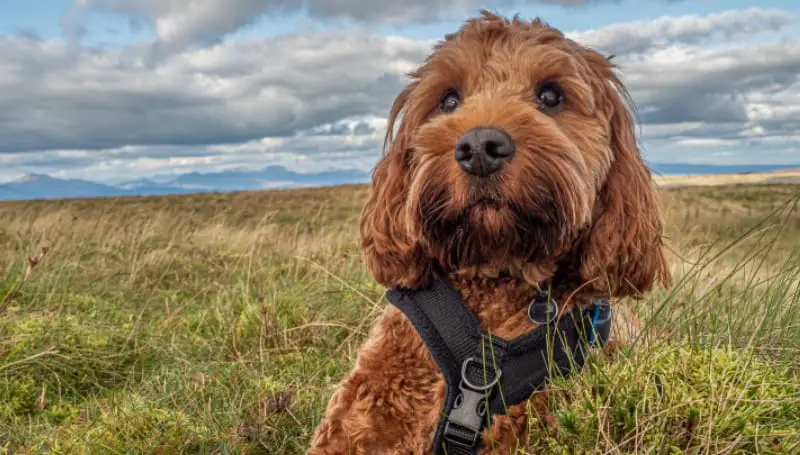Introduction
The Cockapoo sometimes called a Cockapoodle, Cockerdoodle, Cockerpoo or Spoodle is a cross or mixed breed of typically a miniature or toy Poodle and a English or American Cocker Spaniel.
Like its parent breeds, it is intelligent, very friendly and active. This affectionate dog is one of the oldest and most popular poodle mixes. The Cockapoo originated in America around sixty years ago. It is thought that the Cockapoo was not originally bred for its low shedding qualities like most of the Poodle Mix breeds but was likely just the result of some accidental mating.
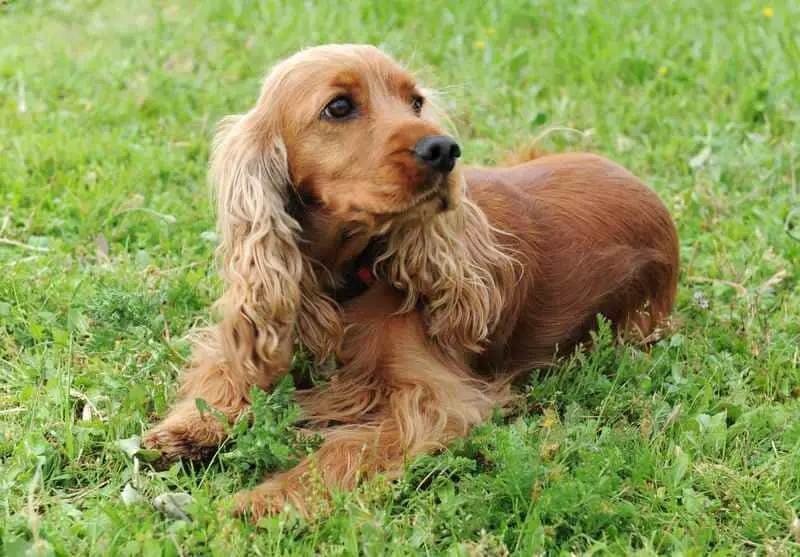
As yet these popular breeds are not recognized by The Kennel Club, The American Kennel Club or The Australian National Kennel Council.
There are however Cockapoo clubs in the US and UK that have breeders lists etc. You should always do your own research/visits to ensure you have a reputable breeder.
As part of any due diligence it is very important you ensure your puppy’s parents have been thoroughly tested and are clear of any hereditary conditions.
The first crossing of a Cocker Spaniel and Poodle creates what is termed as a F1 dog. As the Cockapoo’s popularity has increased breeders have tried to produce consistent predictable offsprings by cross breeding Cockapoos with other Cockapoos to produce multi-generational litters.
Cockapoo Breed Overview
Cockapoo Key Breed Facts
Lifespan – 12 to 16 years
Weight – 15 lbs to 24 lbs (7 kg to 11 kg)
Height – 10″ to 15″ (25 cm to 38 cm) at the withers
Cockapoo Appearance
Cockapoo Size Variations
Cockapoos can come in a variation of sizes and shapes. This depend on the size of the poodle the Cockapoo is breed with. Further cross breeding can result in further variances whilst standardizing expected breeding results. The sizes below are indicative of the common descriptions:
- Toy ~ 10″ (38 cm), 13 lbs (6 kg)
- Miniature ~ 12″ (30 cm), 18 lbs (8 kg)
- Standard ~ 15″ (38 cm), 24 lbs (11 kg)
Color Variations
The Cockapoo coat can be a number of different colors influenced by their parentage. Some of the colors seen are listed below:
- Caramel
- Chocolate
- Cream
- Apricot
- Black (some with white spots)
- Parti
- Chalk
- Silver
- Roan
- White
- Phantom
- Sable
Cockapoo Coats – Do Cockapoo’s Shed?
There can be quite a variation in coat types even within a litter. The amount of shedding can therefore vary as well. Cockapoo coat types fall into the following types:
- Fleece – loose ringlets and wavy coat. Soft to touch and low shedding
- Curly – This coat is similar to a poodle’s coat with tight curls close to the body. This coat is very low shedding.
- Hair – This is the least ‘poodle’ like coat and is mostly seen in first-generation Cockapoos. The coat can shed in a similar fashion to a Cockapoo pure breed.
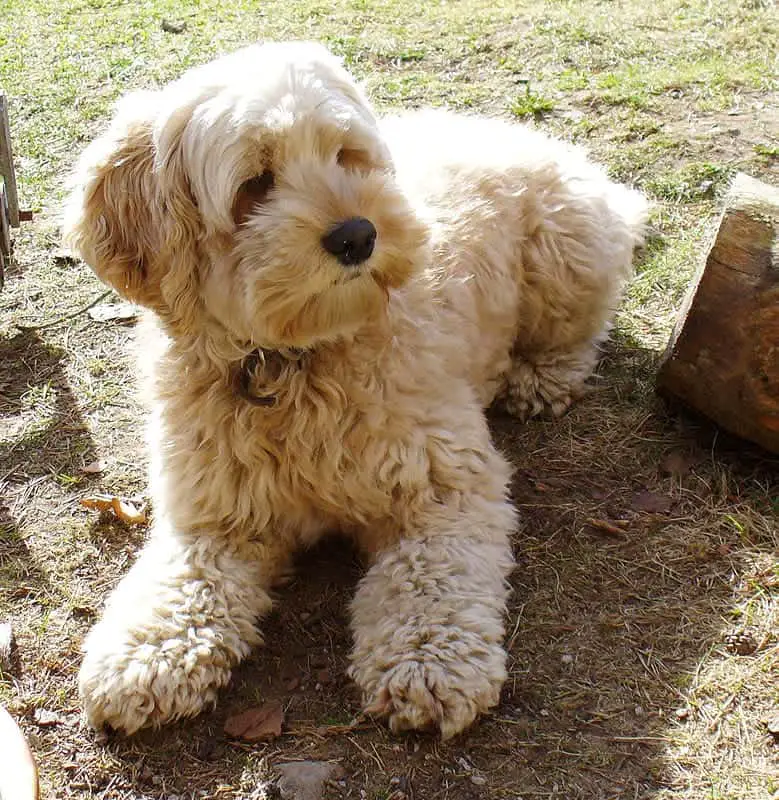
History of the Cockapoo
As discussed earlier the Cockapoo is one of the oldest Poodle Mix breeds. It was not originally bred as an assistance dog like many of its Poodle Mix cousins.
Their popularity was soon established as these amiable smaller dogs became integral in many households across the United States and latterly across the world. This popularity has not abated during the subsequent years and this has led to associations establishing breed standards for these mixed breeds.
The most prominent is the American Cockapoo club formed in 2004. They register Cockapoo litters whose parentage can be confirmed as originating from poodle and Cocker Spaniel lineage. Similarly, there is a Cockapoo Club of GB and many other clubs and organizations across the globe for this popular breed.
Cockapoo Personality
Overall Cockapoos have amazing, friendly and affectionate personalities. Due to the mix of Poodle and Cocker Spaniel genes they are also very intelligent. So what are the other positives and potential negatives?
Great Cockerpoo Traits
- Cockapoos are extremely friendly and typically have a very sunny disposition.
- They are extremely sociable and non-aggressive. They love people including children, other dogs, and most everything they come across.
- The Cockapoo is very active and enjoys exercise and play. They are likely to continue to have a playful nature well into their advanced years.
- Given the right breeding, they can be low shedding and are therefore suitable for households where there are allergy sufferers susceptible to non-poodle mix breeds
- They are good for first-time owners due to their nature and intelligence. They are easy to train and are eager to please their owners
Look Out For
As great as the Cockapoo is there are areas where special care should be taken to maximize your relationship with your dog.
- Since they are smart and energetic, Cockapoos can be difficult to control when they get too excited. When uncontrolled, they can release their excitement by jumping up on people. Whilst they are relatively small this behavior should be discouraged and is obviously not recommended around your children and older people.
- If you do not exercise your Cockapoo sufficiently including mental stimulation then they are likely to find other outlets for their energy. This may translate into undesirable activities such as digging, barking, chewing etc.
- A Cockapoo, especially a well bred one, can be very expensive. It should be noted though that a higher price is not a guarantee of it being well bred and healthy.
- If not trained/Socialized effectively they can bark excessively.
- As they love being around their human families so much they should be trained at an early age to accept being alone for short periods so that they don’t build up anxiety.
- Cockapoos need a fair amount of grooming and maintenance to ensure their coat remains healthy.
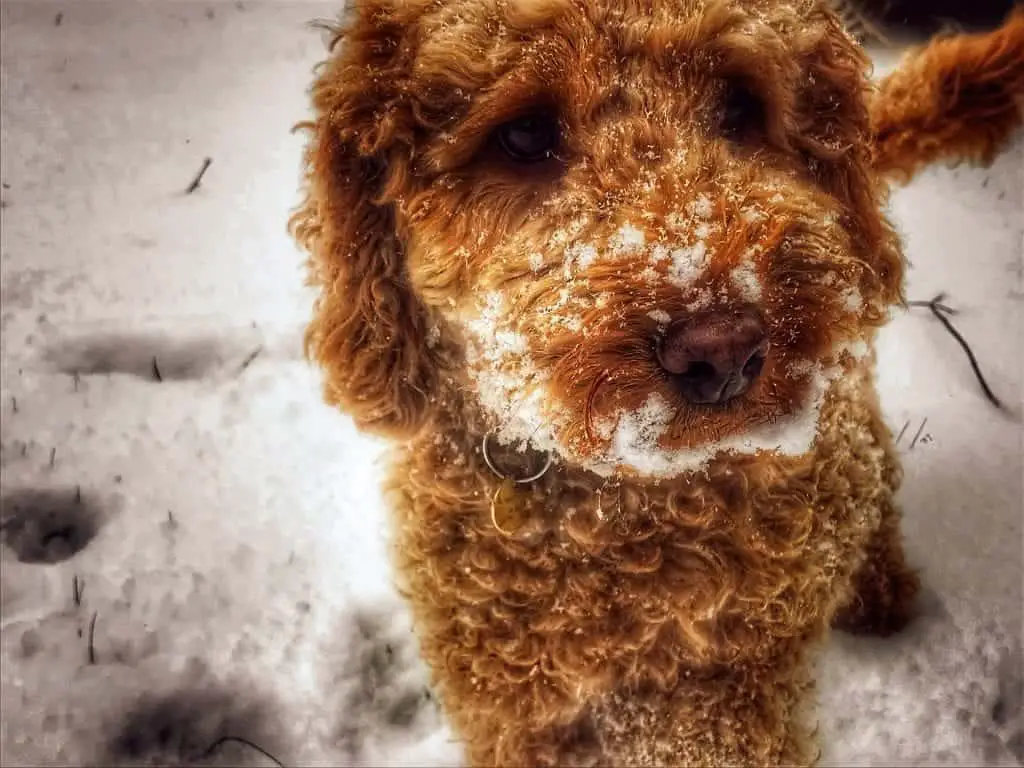
Cockapoo Health
As we have already discussed, understandably Cockapoos have a lot of things in common with both the Cocker Spaniel and poodle. This also includes the possibility of suffering from conditions that are typical in those specific breeds.
There is conjecture as to whether mixed breeds are healthier than pure breeds but in any case, you should always check the health testing of your prospective pup’s parents and inoculations the pup has had itself. A respectable breeder will have conducted these and should be happy to share this information.
The breeding parents should have been tested for the following conditions to give you confidence that your puppy will be healthy.
- Hip Dysplasia
- Progressive Retinal Atrophy (PRA)
Other conditions that can affect Cockapoos are:
- Primary Glaucoma
- Retinal Dysplasia
- Familial Nephropathy
- Phosphofructokinase
- Patella Luxation
- Allergies
- Ear Problems
Cockapoos that have been ethically bred are at a much lower risk of developing the conditions above. Random accidents and illnesses may occur throughout a dog’s life but general everyday health will largely be a consequence of the care they receive. In the next section we delve into how best to care for a Cockapoo.
Cockapoo Care
Cockapoo Medication
A puppy should have been vet checked on a few occasions and had its first vaccination before going to its forever home. Its new owner should ensure these have been conducted and ensure that they follow the vaccination schedule for their country throughout the dog’s life.
This will ensure the dog has the best chance of leading a healthy life and eliminate the chance of contracting avoidable illnesses and diseases.
Cockapoo Grooming
Many people use professional groomers on a periodic basis to cut their dog’s coat and check its overall ‘hair health’. Generally speaking, a visit every 6-10 weeks will keep your dog looking good with a healthy coat.
In between cuts, professional or do it yourself, it is important that Cockapoos are groomed regularly to ensure their coat remains in good condition. The following steps are advised:
- Use a slicker and/or bristle brush every day or two to keep the coat from matting and tangling and to remove any shed hair. Care should be taken not to be too vigorous with brushing to ensure the dog’s skin is not irritated causing skin problems.
It is important that you introduce a puppy to a grooming schedule as soon as you can in their life. It is an essential part of their life and with early training, they will enjoy the experience.
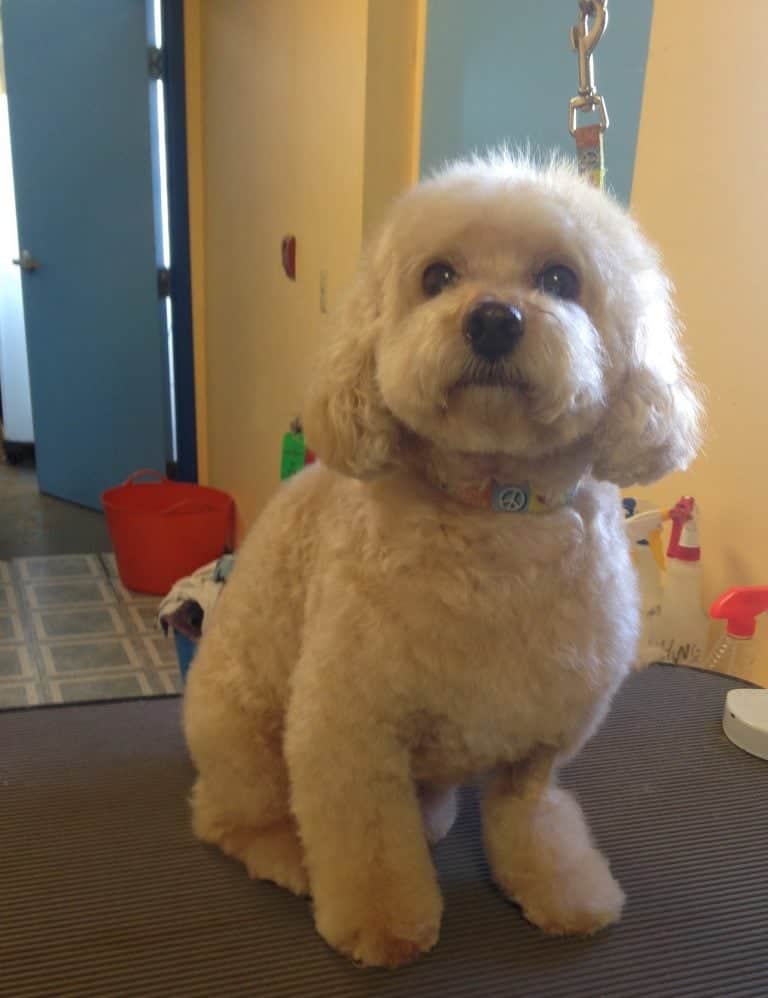
- In between cuts you may need to trim the hair around the eyes, feet and tush region. Being neatly trimmed is particularly useful in the event of snow when ice can build up around the feet and undercarriage. Care should be taken when trimming and it is advised round-nosed scissors are used especially around the eye area.
- The Cockapoo coat should be washed using a dog shampoo. They may be instances where a bath and shampoo is unavoidable but the dog shouldn’t be washed too often. Once a month should be sufficient. When bathing a puppy it is suggested a milder puppy shampoo is used.
- It can take some time to dry a thick Cockapoo coat. It is best to use a towel to dry your Poodle Mix’s body.
- The ears are an area where problems can occur if they are not kept clean and clear. Ears should be wiped regularly with a damp cloth to ensure they are kept clean. Hair can also build up around and inside the ear which can accumulate dirt and wax. Hairs within the ear should be removed with tweezers.
- Teeth should be cleaned using a dog toothbrush and dog toothpaste.
- The final part of your dog grooming regime is to ensure its claws are not too long. It may be that a dog’s claws are kept to a manageable length through daily exercise on tarmac etc. but there may be instances where they will have to be clipped. It is worth investing in a good pair of nail clippers for the job.
Cockapoo Feeding
Dogs, as humans, are healthier, fitter and happier when fed a quality well balanced diet.
Before you buy a product, be sure to read the label first. If buying kibble ensure it contains ‘real’ ingredients (meat and vegetables) and not by-product substitutes.
An alternative to kibble or canned dog food is a Bones and Raw Food (BARF) diet. This would typically consist of around 60% raw meat bones and the rest consisting of vegetables and grains.
Advice should be sought on the composition of the BARF diet to ensure nutrients are balanced and beneficial to the dog’s health.
There are services that deliver the raw elements of a BARF diet so that they can be fed to the dog at scheduled meal times.
Feeding of your dog should be in line with recommendations. Cockapoos aren’t normally fussy eaters and will generally eat whatever is put in front of them. Feeding shouldn’t go unchecked in case the dog gains excess weight.
Care should also be taken with treats. Treats are good for rewarding your dog for good behaviors but should not be overused. Kibble from the dog’s daily diet can always be used as a treat or a supplement to treats when training.
Cockapoo Exercise
The Cockapoo is an energetic dog that requires daily exercise and stimulation to keep it healthy and help with obedience. If a Cockapoo does not receive enough exercise it is likely to take its excess energy out on undesirable activities. They enjoy agility and any chance to expend energy.
Dogs are at their most active early in the morning and at dusk. As a minimum, they should be exercised at these times with the latter ideally a longer session with some free running if possible. A large yard will help allow the Cockapoo to let off some steam but is not a substitute for walks and playtime with its owner.
The Cockapoo should be exercised for a minimum of 40 minutes to 1 hour a day.
With puppies, exercise should not be excessive. The rule of thumb is 5 mins per month of age. This limit should be applied to walking on harder surfaces. It is likely your pup will have some supplementary exercise and mental stimulation through play.
Puppies are energetic and inquisitive. Care should be taken that they don’t jump and stretch excessively as their joints are far from developed and injuries or overuse can lead to problems as they develop.
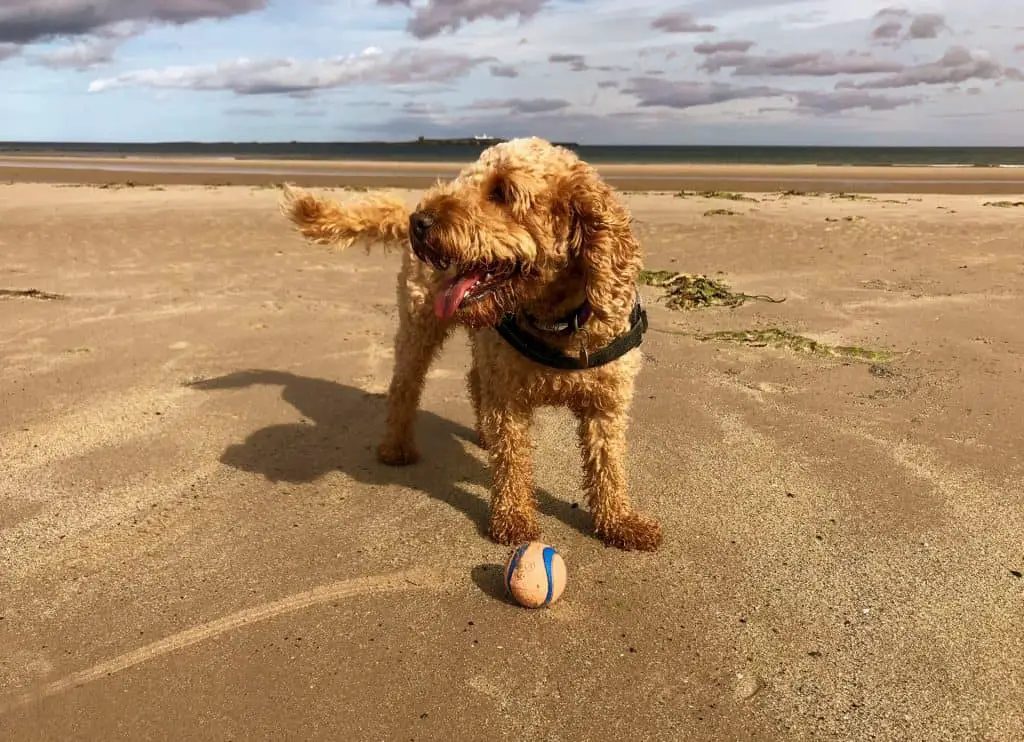
Cost Of A Cockapoo
The price of a Cockapoo can range from USD 950 (approximately £750) up to USD 1500 + (approximately £1200).
It should be noted that the price does not necessarily correlate to the quality and health of a prospective puppy. It is vitally important that checks are still conducted on the breeder and inoculations as described earlier.
When purchasing a Cockapoo prospective owners should try as best as possible to put the excitement of acquiring their new puppy to one side and look objectively at the information in front of them.
Unfortunately, not all breeders have the best interest of their litters at heart so make sure you check all paperwork, testing, etc. to ensure you are happy your puppy has been bred ethically.

